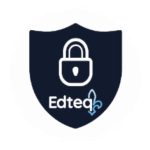by Renaud Boisjoly, Studyo
How do you create something that really affects students, yet, hasn’t been invented already? Definitely a “tour de force” and usually, not something you actually set out to do.
Over the years, as we worked on our platform, we were really answering the needs of very leading edge schools.
The fertile ground of competency-based learning
The education system in Quebec has been known to be very forward-thinking. Since the late ‘90s, it has implemented a fully competency-based program and although it has taken time to take off, and obviously faced challenges, it is a system many other countries look at when they need inspiration.
When you want to figure out what the trends are in Education, you can look at the schools who are pushing the enveloppe first, and Independent schools having less constraints are very often the ones to do this. Nowadays, one-to-one laptop, Chromebook or iPad initiatives are common. But back in the early 2000s, they weren’t at all. Working with Independent schools in our local city of Montreal, we could see the future of education starting to be built.
Schools started by implementing laptop projects and when the iPad and Chromebook launched, most schools quickly adopted them as they did all around the world. But being in a competency-based education program really pushed these schools to look at things in a specific light.
For example, the student planner. For years, paper planners had been used in class and were actually quite central to student lives. Students had to take down their assignments themselves, which led schools to focus on teaching them what it meant to be organized and to plan their work. So when all these devices appeared, these schools wanted to continue teaching these skills.
The limits of teacher-controlled platforms
Many schools tried to move to the tools their School Information System provided or to use standard calendars. But in one case, the tools took control away from students, whereas in the second, calendars were simply not adapted to manage homework and creating a school’s 9 or 12 day schedule and all the class schedules was simply too complex.
Preserving student autonomy
Schools then turned to us to provide a better tool. The goal was simple: they needed it to display a proper rotating day schedule and allow students to enter their own tasks. They also needed teachers to publish to students as well, because exams should be announced centrally so all had the correct information.
So we wrote one, and Studyo was born.
Over time, Studyo became a task and project management tool for students, allowing them to mark work as done, plan their next work session and even subdivide work into smaller steps. A very unique tool that teachers, parents and students love!
Today, Studyo can import tasks from a variety of Learning Management Systems to prevent double-entry and it offers administrators incredible insights into student overload and the organizations of their development skills.
So why isn’t everyone using Studyo? When you talk to a school about a product to manage homework, they automatically think of what they know: the learning management system or other online platforms. And they already use some of those and getting teachers to adopt them is an ongoing project. Change is hard. So adding another tool? No thanks!
The “aha” moment
Studyo is fundamentally different. It provides students with tools they cannot find anywhere else. Tools they control and with which they can learn to self-manage and deal with the stress and anxiety of all their workload. Tools which allow them to play an active role.
No other tool does this. And there is so much more to Studyo as well!
If you would like to learn more about Studyo, please visit us: https://www.studyo.co




 Recevez l'Info #DevProf et l'Hebdo pour ne rien manquer des nouveautés de l'École branchée!
Recevez l'Info #DevProf et l'Hebdo pour ne rien manquer des nouveautés de l'École branchée!




